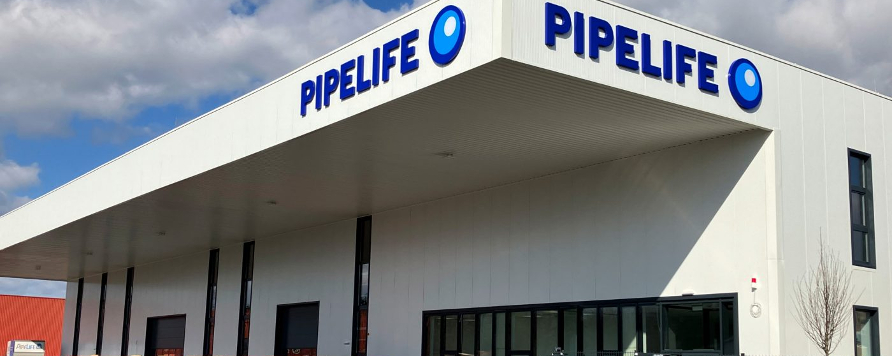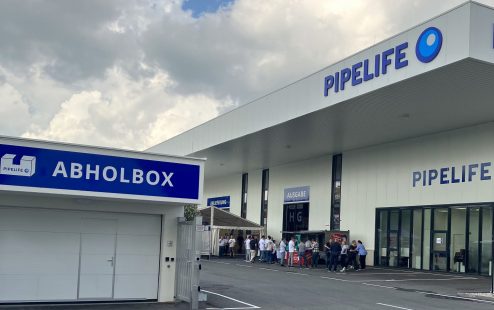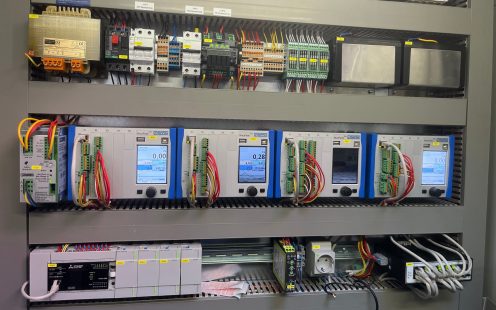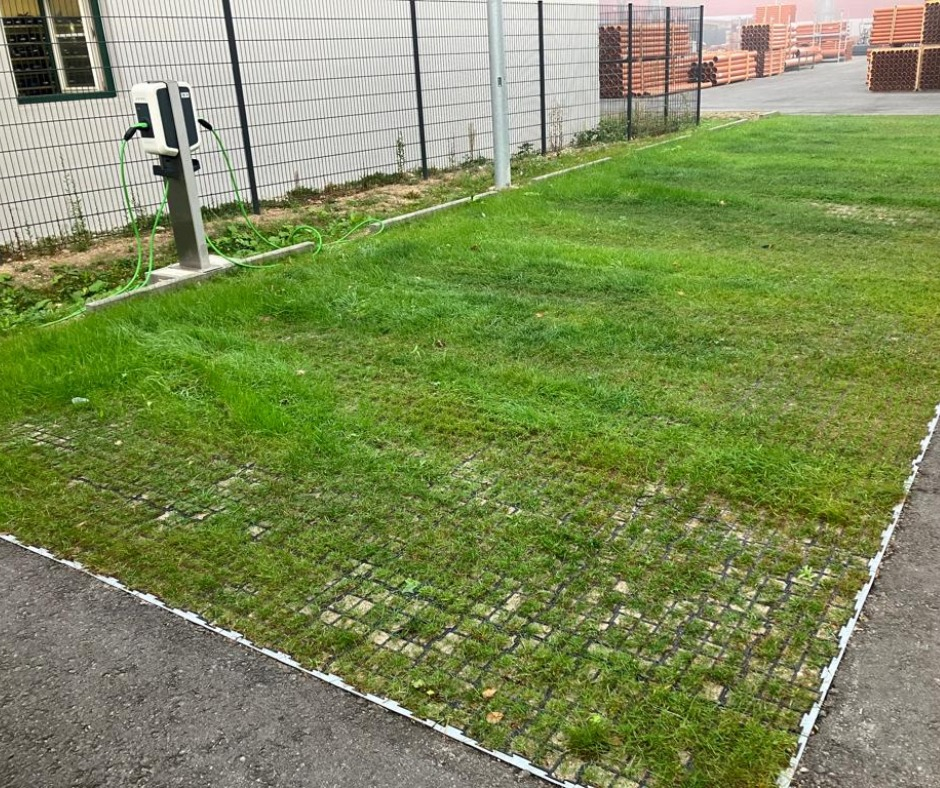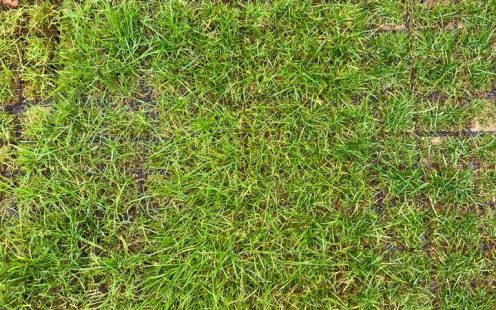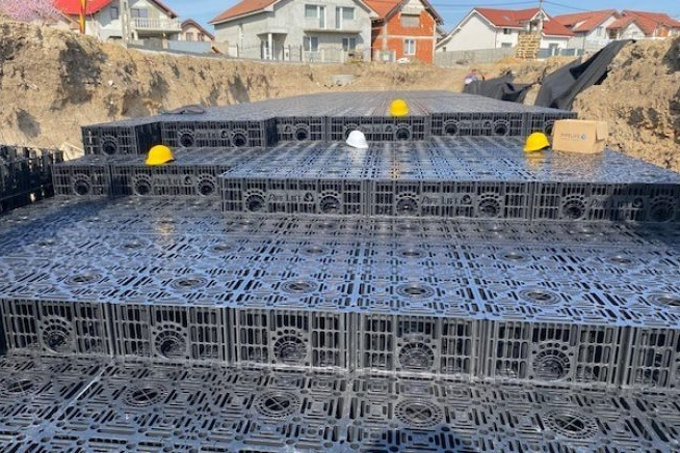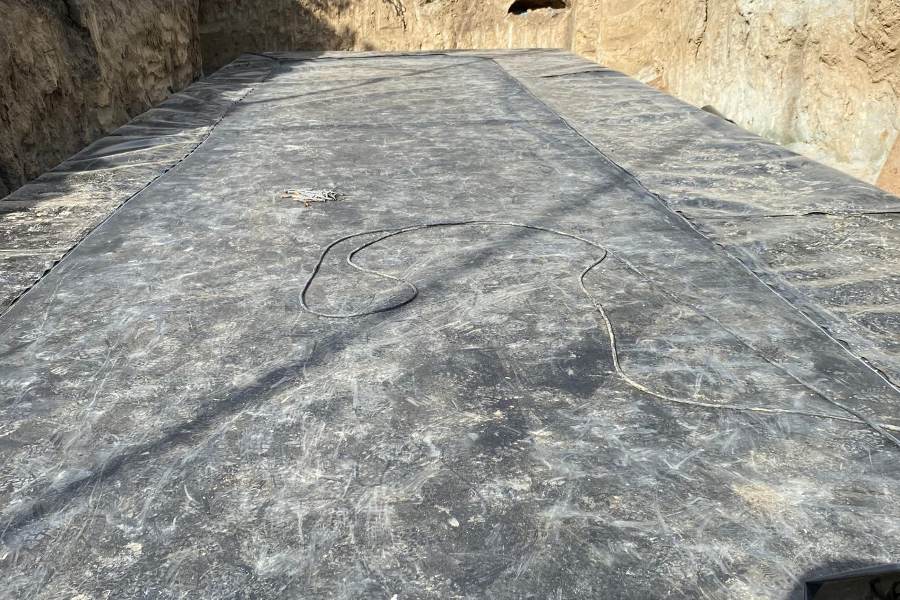A state-of-the-art digitalized system for rainwater harvesting, infiltration and reuse
As Europe grapples with increasingly common heatwaves and droughts alternating with extreme rainfall and even flooding, it has become evident that the current rainwater management practices are not up to such challenges. Pipelife Austria's new logistics center and sales outlet in Leonding feature a state-of-the-art digitalized system for rainwater harvesting, infiltration and reuse. Created considering the needs of large commercial and industrial spaces, the innovative solution goes above and beyond flood protection, offering a holistic and sustainable approach to the numerous water-related dilemmas urban areas have to tackle.
Too good for the drain: the drawbacks of conventional stormwater management practices
Undeniably, the prime goal of rainwater management in urban areas is to prevent water damage. Nevertheless, the traditional drainage systems, where runoff is simply carried away, have numerous risks and downsides.
Due to their limited capacity, conventional drainage networks may not efficiently prevent overflows during heavier spells, which leads to flooding. In the case of combined sewage networks, the consequences can be even more dire, as sewage overflows pose pollution risks to the surrounding environment and local communities.
Furthermore, conventional stormwater drainage systems prevent rainwater from replenishing local groundwater reserves. As water tables in many regions of Europe have been sinking, continued interference with the natural water cycle puts extra strain on our water reserves.
By treating rainwater as mere waste, we also lose on water reuse opportunities, which save resources and reduce bills.
A greener approach: the importance of drainwater infiltration and reuse
Rainwater-related issues have become common in large industrial and commercial spaces due to a greater prevalence of sealed surfaces and heightened building density in such areas.
Modern stormwater management solutions allow for local rainwater treatment, attenuation, infiltration and/or reuse — offering a more efficient, economical, and environmentally friendlier alternative to conventional drainage systems.
Pipelife Austria's new logistics and warehouse area in Leonding boasts an innovative water management concept for industrial and commercial plots. Relying on digital monitoring and control, the all-in-one solution tackles the many aspects of rainwater management while allowing for optimal use of constructible areas and fully aligning with the current green construction practices.
"This summer's droughts have once again proven how vulnerable we are regarding water resources. [This system] offers a user-friendly, full-fledged digitalized ESG solution — relieving wastewater treatment systems and making massive savings on drinking water," says Doris Strohmaier, CSO of Piping Solutions and Applications at Pipelife.
Efficient and space-saving: stormwater management essentials for commercial areas
The 8,400 m² plot in Leonding features two underground water tanks, which allow for local rainwater treatment, infiltration and reuse in a straightforward way. The first tank temporarily stores the collected rainwater before it is treated, thus providing the needed buffer volume in case of heavy rain, while the second tank allows for water infiltration after the treatment stage.
Both tanks were constructed from Pipelife Stormbox attenuation and soakaway crates. The Stormbox crates offer an optimal solution for commercial spaces as they are modular, boast excellent water collection capacity and can be installed in areas with heavy traffic, allowing property developers to take full advantage of the available space. Once installed, the system is practically invisible and poses no limitations for business activity.
Green roofs and parking lots
The full-fledged stormwater management solution in Leonding is designed not only with water preservation and circularity in mind but also considering the growing interest in public green spaces and biodiversity promotion in urban areas.
As an example, permeable paving blocks, filled with a soil-sand mixture and planted with vegetation, have been used for the parking lots in Leonding. Such pavers mimic the way soil absorbs water in nature, increasing infiltration and reducing stormwater discharges, while meeting parking lot paving durability standards.
Furthermore, the warehouse building features an extensive green roof, which naturally delays and reduces the stormwater runoff amount before it even reaches the collection system. The green roof also attracts local wildlife and naturally cools down the warehouse building and its surroundings during periods of heat.
Next-level rainwater management solutions for commercial areas
The new logistics center started operations this spring and officially opened its doors in September 2023, showcasing the on-site digitalized stormwater management solutions to the public and bridging the way for further research, innovations and developments in the future.
In an era where water has become both a precious commodity and a potential threat, Pipelife's innovative approach has set a new standard for resource-saving, sustainable and climate-resilient development — prioritizing water preservation, circularity and green construction practices.
"We have created a comprehensive water management solution that allows optimal use of constructible areas to provide for a growing economy and population while maximizing green spaces, biodiversity and overall climate resilience at reduced water consumption and energy input," sums up Strohmaier. "Our plan is to roll out this solution in all European markets."


